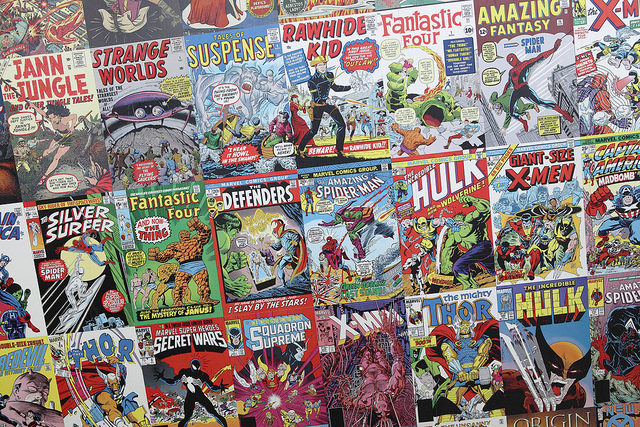
In 1837 there came a small, seemingly inconsequential shift in the way stories were told. One Obadiah Oldbuck was drawn into existence as a series of sequential pictures with text captions. It was originally created with the purpose of being a diversion for the creator and his friends, but all too unexpected it became incredibly popular in both the US and France. This is often considered the first comic, and Rodolphe Töpffer is often considered the father of the genre. Comic Book Day honors this man and everything that has come to follow from that first humble publication.
History of Comic Book Day
While Obadiah Oldbuck was considered to be the first comic, in 1933 the publication known as Famous Funnies is considered to be the first actual comic book. It was produced in the United States from a collection of comic strips that had appeared earlier in newspapers. While the term ‘comic’ implies that the tone of these strips are always humorous, that couldn’t be further from the truth. Comics have been used as a medium for telling stories of all kinds, and while the debate raged for a long time as to whether or not comics could be considered literature, it was the publication of Maus that settled that argument once and for all.
The FBI’s Long Hatred Of Comic Books:
In 1951 the FBI investigated the comics industry. They took issue not only with the popular horror comics of the time, but also with crime comics. The bureau felt the lurid violence depicted in horror comics resulted in increased juvenile delinquency.
But Hoover personally disliked crime comics because he didn’t appreciate their more exciting and romanticized depiction of law enforcement agents, and in particular, of the FBI. This dislike originated as early as 1935, when Hoover criticized the Great American newspaper comic strip adventures of Dick Tracy and Secret Agent X-19.
Batman Was A Total Rip-Off Of This Famous Character:
The Caped Crusader has greatly evolved over his nearly eighty-year publication history, but in the beginning, he was little more than a rip-off of a wildly popular magazine pulp hero. In fact, the first “dark knight” actually appeared in 1931.
Walter Gibson penned the novel The Living Shadow, for Street & Smith publications, to introduce a character now widely accepted as a major influence on comic book heroes in general, and Batman in particular: the mysterious crime-fighter called The Shadow, “who knows what evil lurks in the heart of men.”
The Comics Code Authority Drove One Comics Publisher Mad:
Oops. Typo. “Drove One Comics Publisher to Mad”
After being investigated by the FBI and the U.S. Senate during the early 1950s, the comics industry agreed to a form of self-censorship. Publishers voluntarily submitted every panel of art and every word balloon to the Comics Code Authority. But the CCA was extremely rigid and perhaps even a bit anal in its guidelines for good taste. For instance, no excessive violence, no gore, no cleavage — and absolutely no stories about … ZOMBIES and VAMPIRES and GHOULS — Oh my!
Oh yeah, and publishers weren’t allowed to use the words “crime” or “horror” on the covers of comics…
…Still, Bill Gaines, publisher of the famed EC Comics, The Vault of Horror and Crime SuspenStories, felt as though he’d been bound and gagged under the restrictive and repressive guidelines of the funny book police. In fact, the CCA routinely censored things for the silliest reasons – and most of what it objected to was far more tame than what kids got to see every Saturday in the G-rated movies of the day. So, Gaines eventually dropped his entire comics line in favor of publishing magazines – specifically his wildly successful MAD Magazine.
Sources:












